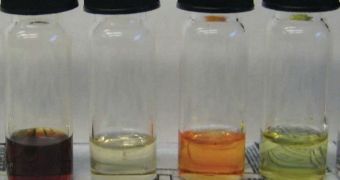Investigators in the United States were recently able to develop a new technique for stripping structures called nanocrystals of unnecessary appendages. These tether-like molecules were hanging on to the crystals, preventing their incorporation within numerous classes of devices.
The research was carried out by experts with the US Department of Energy's (DOE) Lawrence Berkeley National Laboratory (Berkeley Lab). The universal technique the team developed allows for the complete removal of the inconvenient molecules.
With this issue resolved, experts could now move towards creating and developing new technologies, based entirely on nanocrystals. Devices obtained in this manner could be used to create solar fuels, light-emitting diodes, energy storage technologies, and improved photovoltaics, among many others.
The troublesome molecules are absolutely necessary for creating the nanocrystals. Stringy molecules called ligands are tethered to their surfaces, and used to promote the chemical reaction that leads to the formation of these stable crystals.
Without the ligands, there would be no way for the crystals to form in a stable configuration, and they would fall apart. The downside to using these molecules is that the nanostructures are formed with an insulating layer covering them.
This severely limits their uses in modern applications. Removing the molecules is not very easy, as evidenced by the fact that no technology for doing so was developed over decades of research.
In the new study, the Berkeley team managed to demonstrate that triethyloxonium tetrafluoroborate, an organic chemical compound better known as Meerwein's salt, can be used to strip away organic ligands from the surface of newly-formed nanocrystals.
“Our technique basically allows you to take any nanocrystal – metal oxides, metallic, semiconductors – and turn these into dispersions of ligand-free nanocrystal inks for spin or spray coating and even patterning using an ink jet printer,” Brett Helms explains.
“What’s more, they retain their structural integrity and exhibit more efficient transport properties in devices,” adds the expert, who is based at Berkeley Lab’s nanoscience research center, the Molecular Foundry. He is also a staff scientist in the Organic and Macromolecular Synthesis Facility.
“These bare nanocrystals may have unique properties themselves, but also enable the addition of new ligands to this bare surface as desired for some types of nanocrystals,” adds Berkeley Lab postdoctoral researcher Evelyn Rosen.

 14 DAY TRIAL //
14 DAY TRIAL //